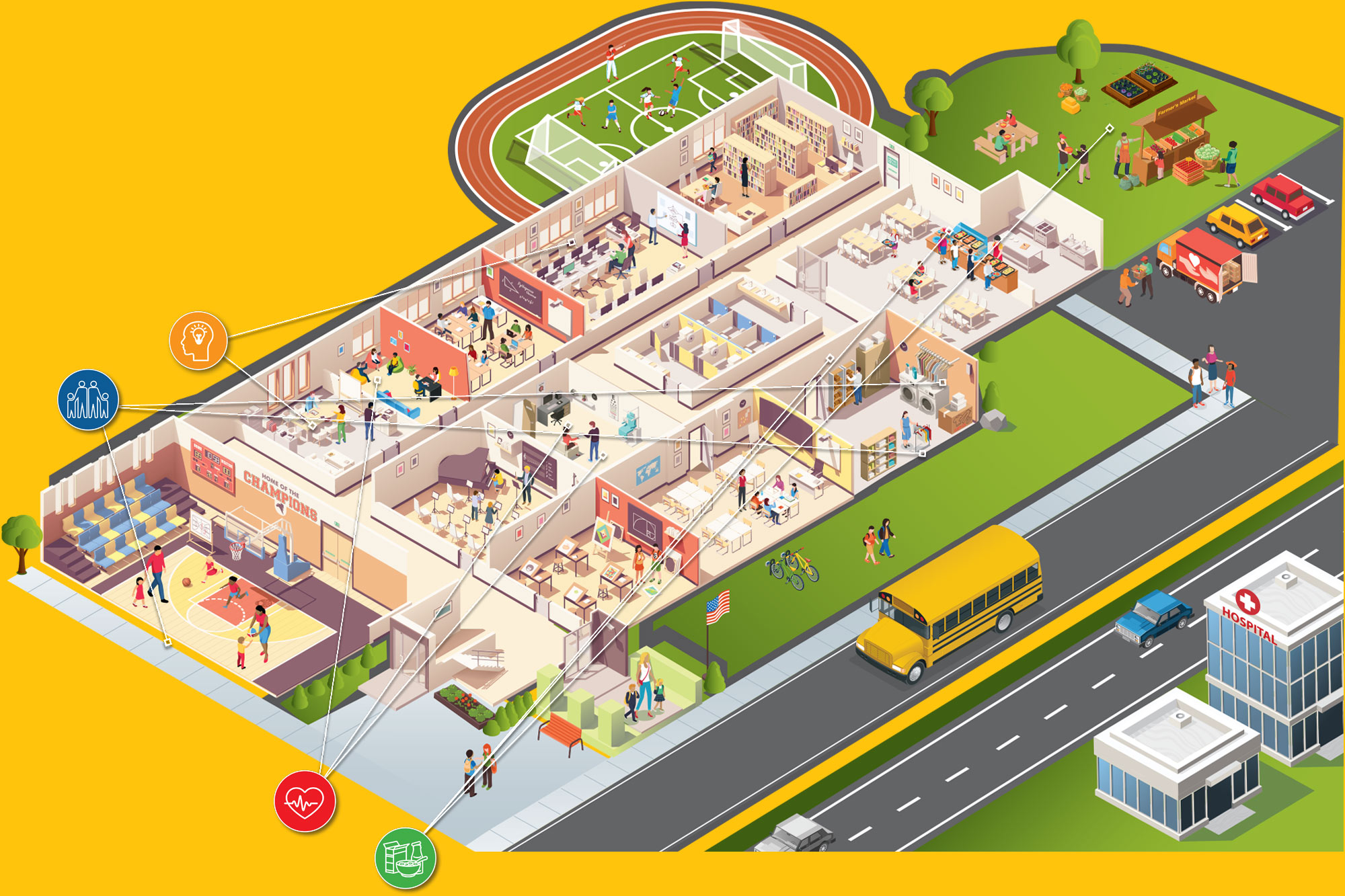How community schools work
ommunity schools work through the coordination of educators, families and community groups to bring much-needed services into school settings. There is no one singular model for community schools: Each school’s offerings will differ, depending on location and the needs of the community they serve. Below are some examples of community school service offerings. For more information, including real-world examples, visit PublicSchoolsUniteUs.org/CommunitySchools.
Key services provided by community schools
Key services provided by community schools
FOOD
SECURITY
FAMILY & STUDENT
SUPPORTS
SERVICES
CONTINUING
EDUCATION

Clothes Closets: Clean clothes are available for children and adults.
On-Site Dental Clinic: On-site dental clinics meet crucial health care needs.
School meals: Full availability of breakfast, lunch and, in some cases, dinner help keep students learning effectively.
Food pantries: Available for students and their families, food pantries provide needed supplementary nutritional assistance.
Key Players
An integral, specially trained staff member who develops partnerships and programs at the heart of community schools.
The community school model involves all school faculty and staff contributing to the wrap-around service and also provides them with enhanced community and peer support.
Family engagement is essential to developing programs that meet a community’s specific needs.
Community Partners:
Health care providers, food suppliers, local businesses and emergency workers can have some integration with the school.
Continuing Education: Evening classes for families and community members on topics such as ESL, literacy and personal finance.
Clothes Closets: Clean clothes are available for children and adults.
On-Site Dental Clinic: On-site dental clinics meet crucial health care needs.
School meals: Full availability of breakfast, lunch and, in some cases, dinner help keep students learning effectively.
Food pantries: Available for students and their families, food pantries provide needed supplementary nutritional assistance.
Key Players
Community School Director/Coordinator:
An integral, specially trained staff member who develops partnerships and programs at the heart of community schools.
Educators and Administrators:
The community school model involves all school faculty and staff contributing to the wrap-around service and also provides them with enhanced community and peer support.
Families:
Family engagement is essential to developing programs that meet a community’s specific needs.
Community Partners:
Health care providers, food suppliers, local businesses and emergency workers can have some integration with the school.